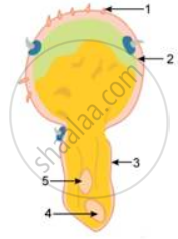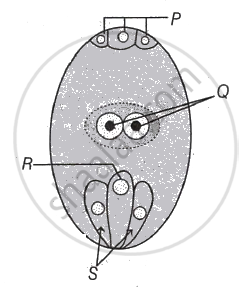Advertisements
Advertisements
प्रश्न
Explain the development of a Dicot embryo
उत्तर
The development of the Dicot embryo (Capsella bursa-pastoris) is of Onagrad or crucifer type. The embryo develops at the micropylar end of the embryo sac. The Zygote divides by a transverse division forming upper or terminal cell and lower or basal cell. The basal cell divides transversely and the terminal cell divides vertically to form a four celled proembryo. A second vertical division right angle to the first one takes place in the terminal cell forming a four celled stage called a quadrant. A transverse division in the quadrant results in eight cells arranged in two tiers of four each called the octant stage. The upper tier of four cells of the octant is called epibasal or anterior octant and the lower tier of four cells constitutes hypobasal or posterior octants. A periclinal division in the octants results in the formation of 16 celled stages with eight cells in the outer and eight in the inner. The outer eight cells represent the dermatogen and undergo anticlinal division to produce epidermis. The inner eight cells divide by vertical and transverse division to form the outer layer of the periblem which give rise to the cortex and a central region of pleurome which forms stele.
APPEARS IN
संबंधित प्रश्न
Where and how does triple fusion take place?
Differentiate between outbreeding and outcrossing.
Given ahead is a diagrammatic sketch of the sectional view of a germinating pollen grain. Study the same and then answer the question that follows:

Where does the germination of the pollen grain take place and how?
Explain the pollination process in maize.
Define fertilization.
The question has four options. Choose the correct answer:
The study of fruits is known as
Syngamy results in the formation of ______.
Double fertilization is fusion of ______.
Double fertilization is a distinctive feature of ______.
Identity the part of embryo sac which takes part in formation of primary endosperm nucleus during fertlisation

